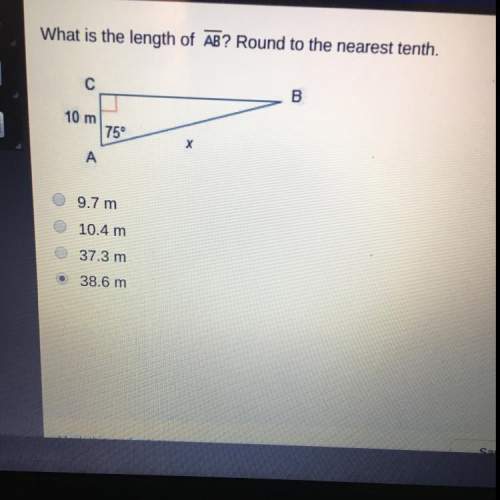
Mathematics, 31.03.2021 04:00 ridzrana02
Sarah canceled her cable package. It cost $89 a month—for that price, she could subscribe to six streaming services, plus have an extra $5 left over each month!
a. Write an equation that you can use to find out how much each streaming service costs, assuming they all cost an equal amount.
b. How much does each streaming service cost?

Answers: 3


Other questions on the subject: Mathematics

Mathematics, 21.06.2019 16:10, cuppykittyy
The probability that a college student belongs to a health club is 0.3. the probability that a college student lives off-campus is 0.4. the probability that a college student belongs to a health club and lives off-campus is 0.12. find the probability that a college student belongs to a health club or lives off-campus. tip: p(a or b) = p(a) + p(b) - p(a and b) 0.54 0.58 0.70 0.82
Answers: 2

Mathematics, 21.06.2019 17:30, muhammadcorley123456
Miranda is braiding her hair. then she will attach beads to the braid. she wants 1_3 of the beads to be red. if the greatest number of beads that will fit on the braid is 12,what other fractions could represent the part of the beads that are red?
Answers: 3

Mathematics, 21.06.2019 18:30, amorosoavap5cejz
You receive 15% of the profit from a car wash how much money do you receive from a profit of 300
Answers: 2

Mathematics, 21.06.2019 21:30, gonzalezashley152
In a test for esp (extrasensory perception), the experimenter looks at cards that are hidden from the subject. each card contains either a star, a circle, a wave, a cross or a square.(five shapes) as the experimenter looks at each of 20 cards in turn, the subject names the shape on the card. when the esp study described above discovers a subject whose performance appears to be better than guessing, the study continues at greater length. the experimenter looks at many cards bearing one of five shapes (star, square, circle, wave, and cross) in an order determined by random numbers. the subject cannot see the experimenter as he looks at each card in turn, in order to avoid any possible nonverbal clues. the answers of a subject who does not have esp should be independent observations, each with probability 1/5 of success. we record 1000 attempts. which of the following assumptions must be met in order to solve this problem? it's reasonable to assume normality 0.8(1000), 0.2(1000)%30 approximately normal 0.8(1000), 0.2(1000)% 10 approximately normal srs it is reasonable to assume the total number of cards is over 10,000 it is reasonable to assume the total number of cards is over 1000
Answers: 1
You know the right answer?
Sarah canceled her cable package. It cost $89 a month—for that price, she could subscribe to six str...
Questions in other subjects:

English, 04.09.2020 01:01


English, 04.09.2020 01:01


Mathematics, 04.09.2020 01:01




Mathematics, 04.09.2020 01:01




